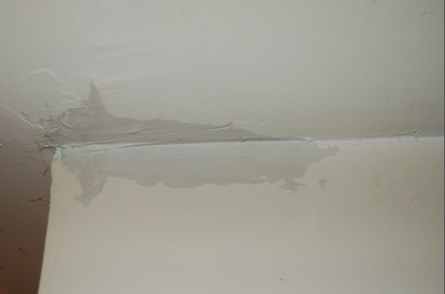6 Water Damage Restoration Do's and Don'ts.
6 Water Damage Restoration Do's and Don'ts.
Blog Article
Just about everyone may have their unique perception involving Fire And Water Damage Prevention.

Water gives life, but water breach on some parts where it's not supposed to be can result in damage and trouble. In addition, houses with water damages smell mildewy as well as old.
Water can originate from numerous sources like typhoons, floodings, ruptured pipes, leaks, as well as drain issues. It's far better to have a functioning understanding of safety and security preventative measures if you have water damages. Below are a few standards on exactly how to deal with water damage.
Do Prioritize House Insurance Coverage Insurance Coverage
Seasonal water damages can come from floodings, seasonal rains, as well as wind. There is likewise an incident of an abrupt flood, whether it originated from a damaged pipeline that suddenly breaks into your house. To protect your house, obtain home insurance coverage that covers both disasters such as all-natural calamities, as well as emergencies like busted plumbing.
Do Not Neglect to Switch Off Utilities
When calamity strikes and you remain in a flood-prone area, switch off the main electric circuit. Switching off the power prevents
electrical shocks when water is available in as water works as a conductor. Don't neglect to switch off the primary water line valve as a way to stop even more damage.
If the floodwaters are getting high, maintain your furniture stable as they can move and create added damage.
Do Remain Proactive as well as Heed Weather Condition Alerts
If you live in a location pestered by floods, remain positive and also ready at all times. Pay attention to the information as well as evacuation cautions if you live near a body of water like a lake, river, or creek .
Do Not Ignore the Roofing System
Your roofing contractor needs to take care of the malfunctioning gutters or any kind of various other indications of damage or weakening. An examination will prevent water from moving down your walls and saturating your ceiling.
Do Focus On Tiny Leakages
A burst pipeline does not take place in a vacuum or overnight. There are red flags that can attract your attention and suggest to you some weakened pipelines in your house. Indications of warnings in your pipes consist of bubbling paint, peeling wallpaper, water streaks, water discolorations, or leaking audios behind the walls. There are indicators that the pipe will certainly burst. If you see these indications, don't wait on a rise. Repair as well as check your plumbing fixed prior to it results in substantial damage to your residence, finances, and a personal problem.
Don't Panic in Case of a Burst Pipeline
Timing is essential when it comes to water damages. If a pipeline ruptureds in your house, promptly shut off your main water shutoff to cut off the resource as well as protect against even more damages. Call a reputable water damages remediation professional for assistance.
Water provides life, but water breach on some parts where it's not intended to be can result in damage and also hassle. In enhancement, houses with water damage smell old and also stuffy.
Seasonal water damages can come from floodings, seasonal rains, and wind. Indicators of red flags in your pipelines include bubbling paint, peeling off wallpaper, water touches, water spots, or trickling sounds behind the walls. If a pipeline bursts in your house, quickly shut off your major water shutoff to reduce off the source and also prevent more damages.
Some Do's & Don't When Dealing with a Water Damage
DO:
Make sure the water source has been eliminated. Contact a plumber if needed. Turn off circuit breakers supplying electricity to wet areas and unplug any electronics that are on wet carpet or surfaces Remove small furniture items Remove as much excess water as possible by mopping or blotting; Use WHITE towels to blot wet carpeting Wipe water from wooden furniture after removing anything on it Remove and prop up wet upholstery cushions for even drying (check for any bleeding) Pin up curtains or furniture skirts if needed Place aluminum foil, saucers or wood blocks between furniture legs and wet carpet Turn on air conditioning for maximum drying in winter and open windows in the summer Open any drawers and cabinets affected for complete drying but do not force them open Remove any valuable art objects or paintings to a safe, dry place Open any suitcases or luggage that may have been affected to dry, preferably in sunlight Hang any fur or leather goods to dry at room temperature Punch small holes in sagging ceilings to relieve trapped water (don't forget to place pans beneath!); however, if the ceiling is sagging extremely low, stay out of the room and we'll take care of it DO NOT:
Leave wet fabrics in place; dry them as soon as possible Leave books, magazines or any other colored items on wet carpets or floor Use your household vacuum to remove water Use TV's or other electronics/appliances while standing on wet carpets or floors; especially not on wet concrete floors Turn on ceiling fixtures if the ceiling is wet Turn your heat up, unless instructed otherwise

Hopefully you liked our post about Preventing Fires and Water Damage In Your Home. Thank you so much for taking a few minutes to read our blog. Are you aware of someone else who is inquisitive about the topic? Why not promote it. Many thanks for your time invested reading it.
Report this page